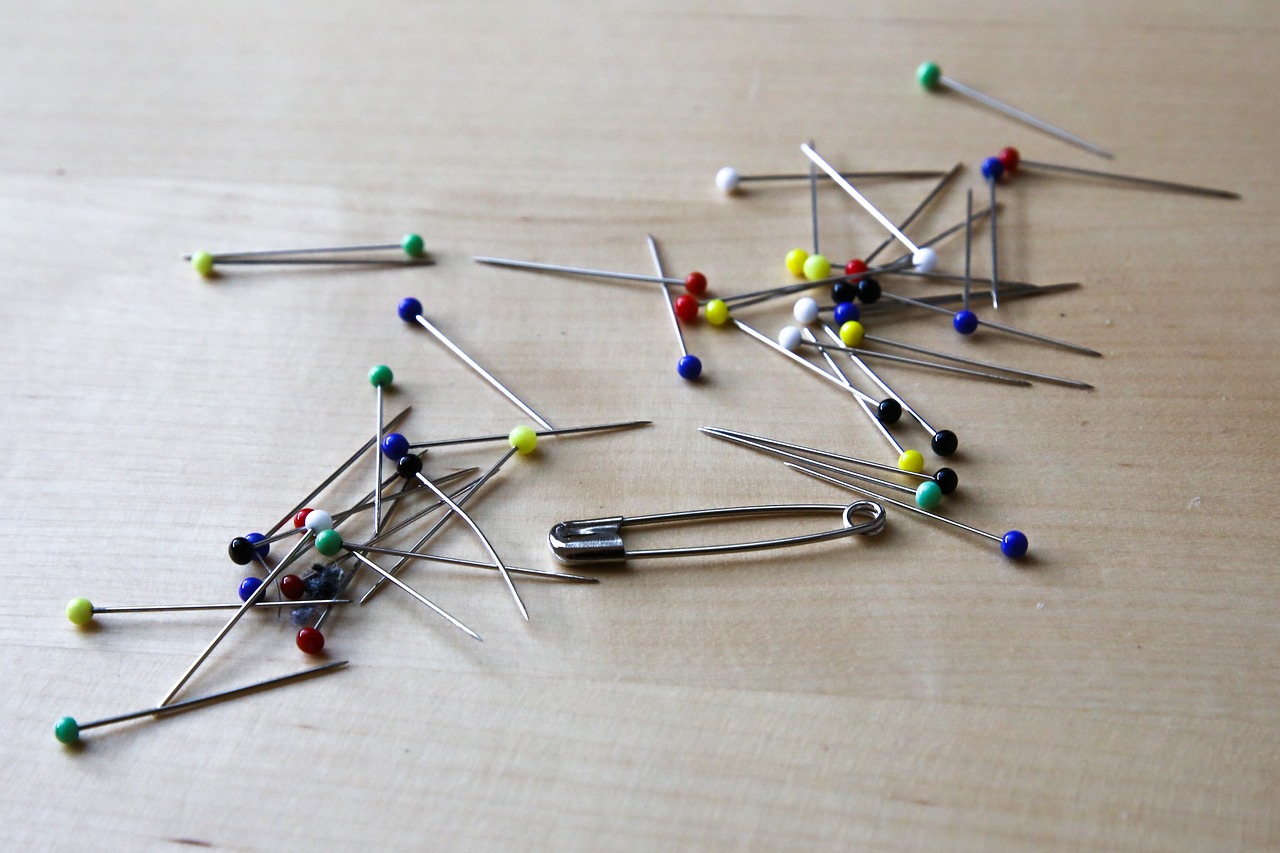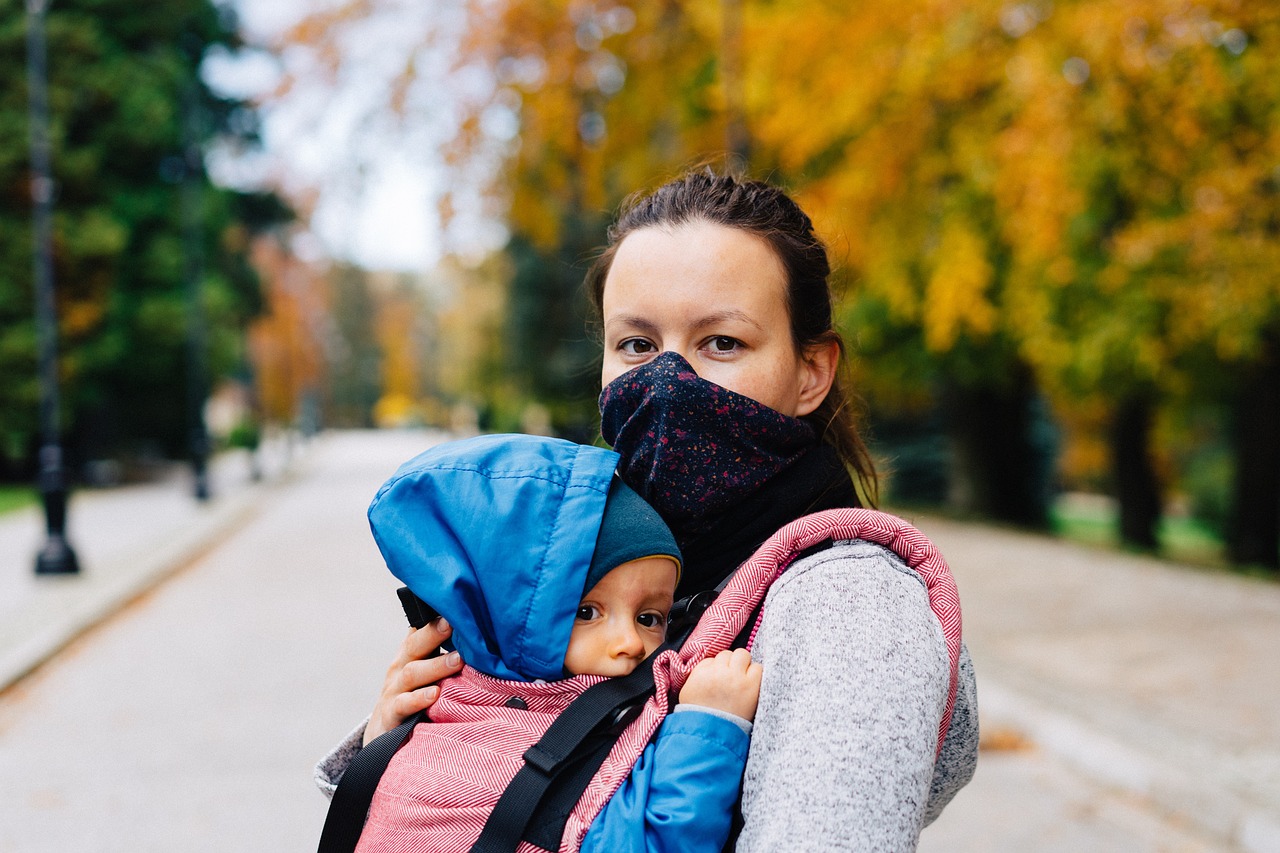Is Your Pantry Safe from Food Contamination
In today's fast-paced world, maintaining a safe pantry is more crucial than ever. With the increasing variety of food options available, it's easy to overlook the potential risks that come with improper storage and contamination. Have you ever wondered what lurks in the depths of your pantry? Is that can of soup from last year still safe to eat? This article dives deep into the importance of pantry safety, examining potential sources of contamination, and offering you practical preventive measures to ensure that your food remains safe and your kitchen environment stays healthy.
Food contamination is a serious issue that can arise from various sources, including biological, chemical, and physical factors. Biological contamination often involves harmful bacteria, viruses, or parasites that can multiply rapidly if food is not stored correctly. Chemical contamination can occur through exposure to harmful substances, such as pesticides or cleaning agents. Physical contamination, on the other hand, involves foreign objects like hair or glass that can unintentionally make their way into your food. Recognizing these risks is essential to protect your health and ensure the safety of your pantry items.
Identifying common sources of food contamination is the first step toward prevention. Pests, improper storage, and expired products are among the leading culprits that can compromise the safety of your pantry. For instance, pests like rodents and insects can invade your pantry, bringing with them a host of potential health hazards. Improper storage practices, such as leaving food uncovered or not sealing packages correctly, can also lead to spoilage and contamination. Lastly, expired products lurking at the back of your pantry can pose serious health risks if consumed.
Pests like rodents and insects can easily invade your pantry, leading to contamination that could jeopardize your health. These unwanted guests are not just a nuisance; they can carry diseases and contaminate your food supply. Understanding how to identify and eliminate these pests is key to maintaining a safe food environment. For example, did you know that a single mouse can produce up to 200 droppings a day? That's a lot of potential contamination!
Recognizing the signs of pest infestation is crucial for taking immediate action. Look out for:
- Droppings: Small, dark pellets often found near food sources.
- Gnaw Marks: Signs of chewing on packaging or food items.
- Unusual Smells: A musty or foul odor can indicate pest presence.
- Nests: Shredded paper or fabric can signal nesting activity.
By being vigilant and regularly inspecting your pantry, you can catch these issues before they escalate.
Implementing preventive measures is essential to reduce the risk of pest infestations in your pantry. Simple actions like:
- Sealing all food items in airtight containers.
- Regularly cleaning your pantry shelves.
- Checking for cracks or holes in walls and floors.
These steps can significantly decrease the likelihood of pests making themselves at home in your pantry.
Storing food incorrectly can lead to spoilage and contamination, which is why following proper storage guidelines is critical. For instance, keeping dry goods in a cool, dry place can help extend their shelf life. Additionally, it's essential to keep raw and cooked foods separate to prevent cross-contamination. When in doubt, always label your items with the date they were opened or cooked to keep track of their freshness.
Adopting best practices for pantry safety can help minimize contamination risks. Here are some essential tips for organizing and maintaining a safe pantry environment:
Regular cleaning and maintenance of your pantry are vital for preventing contamination. Establishing a cleaning schedule can help keep your pantry organized and safe. Aim to clean your pantry at least once a month, checking for expired items and wiping down shelves to remove any crumbs or spills that may attract pests.
Being aware of expiration dates is crucial for maintaining food safety. Regularly checking your pantry items can prevent the consumption of spoiled or contaminated food. Make it a habit to rotate items—first in, first out—to ensure that older products are used before they expire. This simple practice can save you from potential foodborne illnesses.
Q: How often should I clean my pantry?
A: It's best to clean your pantry at least once a month to keep it organized and free from pests.
Q: What should I do if I find pests in my pantry?
A: Remove infested items immediately and clean the area thoroughly. Consider using traps or calling a pest control professional if the infestation is severe.
Q: How can I tell if food is still safe to eat?
A: Always check the expiration date, and inspect for signs of spoilage, such as off smells or unusual textures.

Understanding Food Contamination
This article explores the importance of pantry safety, examining potential contamination sources, preventive measures, and best practices to ensure food safety and maintain a healthy kitchen environment.
Food contamination is a serious concern that can arise from various factors, and understanding these factors is the first step in safeguarding your health. There are three main categories of food contamination: biological, chemical, and physical. Each of these categories presents unique risks that can compromise the safety of the food in your pantry.
Biological contamination is perhaps the most common type, often caused by bacteria, viruses, or parasites. These microorganisms can proliferate in food, especially if it is not stored properly. For instance, did you know that certain bacteria thrive in warm, moist environments? This is why it's crucial to keep your pantry dry and cool. Foods like grains and cereals, if left exposed, can easily become breeding grounds for these harmful pathogens.
Chemical contamination occurs when harmful substances, such as pesticides or cleaning agents, inadvertently come into contact with food. It's essential to store these chemicals away from your food items. Imagine reaching for a jar of pasta sauce, only to find it tainted with a cleaning product's residue! To avoid this, always ensure that cleaning supplies are stored in a separate area, away from your pantry.
Lastly, physical contamination involves foreign objects that can accidentally make their way into food products. This could range from small pieces of plastic to bits of glass or metal. Such contaminants can pose serious health risks, and their presence is often due to improper packaging or careless handling during food preparation. Always inspect your food items before use, and be mindful of any signs of damage or tampering.
To summarize, food contamination can stem from various sources, and it is vital to be vigilant. Here’s a quick recap of the main types:
- Biological: Bacteria, viruses, parasites
- Chemical: Pesticides, cleaning agents
- Physical: Foreign objects like plastic or glass
By understanding these contamination types, you can take proactive steps to protect your food and your health. The next time you reach for that box of cereal or can of beans, remember the potential risks and ensure that your pantry is a safe haven for your food supplies.
Identifying common sources of food contamination is essential for prevention. This section discusses pests, improper storage, and expired products that can compromise the safety of your pantry.
Pests like rodents and insects can easily invade your pantry, leading to contamination. Understanding how to identify and eliminate these unwanted guests is key to maintaining a safe food environment.
Recognizing the signs of pest infestation, such as droppings or gnaw marks, can help you take immediate action to protect your pantry and food supplies from contamination.
Implementing preventive measures, such as proper sealing and regular cleaning, can significantly reduce the risk of pest infestations in your pantry.
Storing food incorrectly can lead to spoilage and contamination. This section highlights the importance of following proper storage guidelines to keep your pantry safe.
Adopting best practices for pantry safety can help minimize contamination risks. This section outlines essential tips for organizing and maintaining a safe pantry environment.
Regular cleaning and maintenance of your pantry are vital for preventing contamination. Establishing a cleaning schedule can help keep your pantry organized and safe.
Being aware of expiration dates and regularly checking your pantry items can prevent the consumption of spoiled or contaminated food. This practice is essential for maintaining food safety.
Q: How often should I clean my pantry?
A: It's recommended to clean your pantry at least once every three months. However, if you notice spills or pests, clean it immediately.
Q: What should I do if I find expired food in my pantry?
A: Dispose of any expired food immediately. Check for any signs of spoilage, and clean the area where the food was stored.
Q: How can I prevent pests from entering my pantry?
A: Ensure all food is stored in airtight containers, keep your pantry clean, and seal any gaps in walls or floors to prevent pest entry.

Common Sources of Contamination
Understanding the common sources of food contamination is essential for maintaining a safe and healthy pantry. Contamination can sneak in from various avenues, and being aware of these risks can help you take proactive measures to safeguard your food. Let's break down some of the most prevalent culprits that can compromise the integrity of your pantry items.
One of the most alarming sources of contamination is pests. Rodents and insects can invade your pantry without you even noticing. These unwelcome guests can carry harmful bacteria, and their droppings can contaminate your food. Imagine reaching for a box of cereal only to find tiny droppings inside; it’s enough to make your skin crawl! Regular inspections of your pantry for signs of pests are crucial. Look for droppings, gnaw marks, and even webs, which can indicate the presence of spiders or other insects.
Another significant source of contamination comes from improper storage practices. Many people underestimate the importance of storing food correctly. For example, keeping opened packages of dry goods like flour or sugar exposed can lead to spoilage or contamination from moisture and pests. It’s vital to use airtight containers to protect your food. Not only does this keep pests out, but it also helps maintain the freshness of your items. Additionally, storing food at the right temperatures can prevent the growth of harmful bacteria. For instance, perishable items should always be kept in the refrigerator, while dry goods should be stored in a cool, dry place.
Expired products also pose a serious risk. It’s easy to forget about that can of soup hiding in the back of your pantry, especially if it’s been there for a while. Consuming expired food can lead to foodborne illnesses, which can be severe. Regularly checking expiration dates and removing outdated items is essential in keeping your pantry safe. To make this process easier, consider organizing your pantry so that older items are visible and easily accessible. This way, you can use them before they expire, minimizing waste and ensuring that you’re consuming safe food.
In summary, being aware of the common sources of food contamination—such as pests, improper storage, and expired products—can help you take the necessary steps to keep your pantry safe. By staying vigilant and adopting good practices, you can ensure that your food remains uncontaminated and healthy.
- What are the signs of a pest infestation in my pantry? Look for droppings, gnaw marks, and webs, which can indicate the presence of pests.
- How can I properly store dry goods to prevent contamination? Use airtight containers and keep them in a cool, dry place to protect against moisture and pests.
- Why is it important to check expiration dates regularly? Consuming expired food can lead to foodborne illnesses, so regular checks help maintain food safety.

Pests and Insects
When it comes to pantry safety, are the uninvited guests that nobody wants to deal with. These tiny troublemakers can wreak havoc on your food supplies, turning a well-stocked pantry into a breeding ground for contamination. Whether it’s the common cockroach scuttling across your shelves or the pesky pantry moth fluttering about, understanding how these creatures invade your space is crucial. They not only compromise the integrity of your food but can also pose serious health risks to you and your family.
So, how do these unwelcome visitors find their way into your pantry? It often starts with a simple crack or crevice that goes unnoticed. Pests are masters of disguise and can squeeze through the tiniest openings, making it essential to seal any gaps in your pantry. Once they’re in, they can quickly multiply, leading to an infestation that can feel overwhelming. Not only do they contaminate food with their droppings and body parts, but they can also carry diseases that can affect your health.
To effectively combat these intruders, it’s important to recognize the signs of an infestation. Look for:
- Droppings: Small, dark pellets often found near food sources.
- Gnaw Marks: Evidence of chewing on packaging or food containers.
- Webbing: Silk threads or webbing can indicate the presence of pantry moths.
Taking immediate action when you spot these signs is key. Ignoring the problem can lead to a full-blown invasion, making it even harder to reclaim your pantry. Start by removing any infested items and cleaning the area thoroughly. Use a vacuum to get rid of any droppings or debris, and don’t forget to wash the shelves with a disinfectant to eliminate lingering scents that may attract more pests.
Prevention is your best defense against pests. Here are some effective strategies you can implement:
- Seal Food Properly: Store dry goods in airtight containers to keep pests out.
- Regular Inspections: Frequently check your pantry for signs of pests or spoilage.
- Maintain Cleanliness: Regularly clean your pantry to eliminate crumbs and spills that attract pests.
By being proactive and vigilant, you can keep your pantry safe from these pesky intruders. Remember, a clean and well-organized pantry is not just visually appealing; it's also a fortress against contamination and a haven for healthy food storage.

Signs of Infestation
When it comes to keeping your pantry safe, being vigilant about the is crucial. You might be wondering, "How do I know if I have unwanted guests in my pantry?" Well, there are several red flags to watch out for that can indicate a pest problem. First and foremost, keep an eye out for droppings. These tiny little pellets may be small, but they can tell you a big story about the presence of rodents or insects. If you spot these droppings near your food items, it’s time to take action!
Another common sign is gnaw marks on packaging or shelves. Rodents have a tendency to chew through cardboard and plastic, leaving behind unmistakable evidence of their presence. If you notice any suspicious marks, consider it a warning that your food is at risk. Additionally, look for webbing or nesting materials—these are often signs of insects like spiders or pantry moths. If you find any of these, it’s a good idea to check your food items closely.
Sometimes, the smell can be a giveaway. A sudden, unpleasant odor emanating from your pantry can indicate that something is amiss. This could be a sign of spoiled food or the presence of pests. Don't ignore your senses; they can guide you in detecting potential infestations before they escalate.
In addition to these signs, consider conducting a thorough inspection of your pantry every few weeks. This routine can help you catch any issues early on. Remember, it’s not just about finding pests; it’s also about preventing them from taking up residence in the first place. If you do find evidence of an infestation, don’t panic. Address the problem immediately by cleaning the area, discarding contaminated food, and implementing pest control measures.
In summary, being aware of the signs of infestation is your first line of defense in maintaining a safe pantry. By keeping an eye out for droppings, gnaw marks, webbing, unpleasant odors, and conducting regular inspections, you can ensure that your food remains uncontaminated and safe for consumption. Remember, a little vigilance goes a long way in keeping your pantry healthy!
- What should I do if I find pests in my pantry?
If you find pests, immediately remove contaminated food, clean the area thoroughly, and consider contacting a pest control professional.
- How often should I check my pantry for signs of infestation?
It's a good practice to inspect your pantry every few weeks to catch any potential issues early.
- Can I prevent pests from entering my pantry?
Yes! Proper sealing of food containers, regular cleaning, and maintaining a clutter-free environment can help deter pests.

Preventive Measures
When it comes to keeping your pantry safe from contamination, prevention is the name of the game. Just like locking your doors at night keeps intruders out, implementing a few simple preventive measures can help keep pests and contamination at bay. Start by ensuring that all food items are stored in airtight containers. This not only protects your food from pesky insects but also helps maintain freshness. Think of it as giving your pantry a fortress-like defense against unwanted invaders.
Another essential step is to regularly inspect your pantry for signs of contamination. This means checking for any expired items, damaged packaging, or signs of pests. It’s like being a detective in your own kitchen—always on the lookout for clues that something might be amiss. If you spot anything suspicious, don’t hesitate to take action! Dispose of contaminated items immediately and clean the affected area thoroughly to eliminate any lingering threats.
Maintaining a clean and organized pantry is crucial. Establish a routine cleaning schedule, perhaps once a month, to wipe down shelves, vacuum corners, and check for any hidden crumbs that might attract pests. Consider the pantry as a living space that needs regular upkeep. Keeping it tidy not only prevents contamination but also makes it easier to find what you need when you're in a hurry. After all, who doesn’t love a well-organized pantry?
Additionally, be mindful of how you store different food items. For instance, keep dry goods like grains and pasta on shelves, while storing perishable items in the refrigerator or freezer. This simple act can significantly reduce the risk of spoilage. If you have bulk items, consider dividing them into smaller portions and storing them in labeled containers. This way, you can track expiration dates more effectively and avoid the dreaded mystery pantry item that’s been lurking for months.
Lastly, don’t underestimate the power of natural repellents. Certain herbs and spices, such as bay leaves and peppermint, can deter pests when placed in your pantry. Think of them as your pantry’s little bodyguards, working tirelessly to keep your food safe. Incorporating these preventive measures into your routine can create a robust defense against food contamination, ensuring that your pantry remains a safe haven for all your culinary delights.

Improper Storage Practices
When it comes to food safety, can be a silent enemy lurking in your pantry. Imagine opening your pantry door, only to be greeted by a chaotic jumble of items, some of which are long past their prime. This disorganization not only makes it difficult to find what you need but also increases the risk of food spoilage and contamination. Proper storage is crucial in maintaining the quality and safety of your food. So, what are some common storage mistakes that could be putting your health at risk?
One major issue is mixing raw and cooked foods. Storing raw meats alongside ready-to-eat items can lead to cross-contamination, which is a recipe for disaster. For example, if juices from raw chicken leak onto your pasta, you could be inviting harmful bacteria into your meal. To avoid this, always store raw meats in sealed containers on the bottom shelf, away from other foods.
Another common mistake is ignoring temperature control. Many people store their pantry items without considering the environment. For instance, keeping items like oils and spices in a warm, humid area can lead to spoilage. Instead, aim to keep your pantry in a cool, dry place, away from direct sunlight. If you’re unsure about the best storage conditions for specific items, a quick glance at the label can provide valuable information.
Additionally, failing to use airtight containers is a significant oversight. Leaving food in its original packaging can expose it to air, moisture, and pests. By transferring items like flour, sugar, and grains into airtight containers, you not only prolong their shelf life but also protect them from contamination. Here’s a quick overview of what to store in airtight containers:
| Food Item | Reason for Airtight Storage |
|---|---|
| Flour | Prevents moisture and pests from ruining it |
| Rice | Protects against weevils and other insects |
| Spices | Maintains flavor and prevents clumping |
Lastly, let’s not forget about the importance of rotation. Just like a well-oiled machine, your pantry needs to be maintained. Using the FIFO (First In, First Out) method ensures that older items are used before newer ones. This practice not only minimizes waste but also helps you keep track of expiration dates. Regularly checking your pantry and organizing items based on their purchase date can save you from the unpleasant surprise of finding expired food.
In conclusion, being mindful of how you store your food can significantly impact your pantry's safety. By avoiding these common storage pitfalls, you can create a healthier environment for you and your family. Remember, a well-organized pantry is not just a matter of aesthetics; it's a crucial step in ensuring food safety!
- What are the signs of spoiled food? Look for changes in color, texture, or smell. If it looks or smells off, it’s better to be safe and throw it away!
- How often should I clean my pantry? A good rule of thumb is to clean your pantry every 3-6 months, or whenever you notice spills or pests.
- Can I store food in plastic bags? While plastic bags can be useful, they are not ideal for long-term storage. Opt for airtight containers instead to keep food fresh.

Best Practices for Pantry Safety
Keeping your pantry safe from food contamination is not just about storing items in a cupboard; it's about creating a sanctuary for your food. A well-organized and clean pantry can significantly reduce the risk of contamination while ensuring that your food remains fresh and safe to consume. One of the first steps in maintaining pantry safety is to establish a regular cleaning routine. Think of it as giving your pantry a spa day! Set aside time every few weeks to wipe down shelves, check for expired items, and organize your goods. This habit not only keeps things tidy but also allows you to spot any potential issues before they escalate.
Another important aspect is expiration date awareness. It’s easy to forget about the little jar of spices or that box of pasta in the back corner. Make it a habit to regularly check the expiration dates on your pantry items. You might be surprised by how many items have overstayed their welcome! Consider implementing a first in, first out (FIFO) system, where you always use the oldest items first. This method is particularly effective for canned goods and dry ingredients. By doing this, you reduce waste and ensure that you're always consuming the freshest products.
When it comes to storage, the way you organize your pantry can have a huge impact on safety. Store items in airtight containers to protect them from pests and moisture. Not only does this keep your food fresh, but it also makes it easier to see what you have at a glance. Labeling containers can also be a game changer—imagine finding exactly what you need without having to sift through a mountain of bags and boxes!
Furthermore, it’s essential to be mindful of the temperature and humidity levels in your pantry. Ideally, your pantry should be cool and dry. High humidity can lead to mold growth, while excessive heat can spoil food. If you live in a particularly humid area, consider using moisture absorbers or silica gel packets to keep things dry. Regularly checking your pantry's conditions can help you maintain an ideal environment for food storage.
Lastly, don’t underestimate the power of education. Familiarize yourself with the signs of food spoilage and contamination. Understanding what to look for can save you from consuming spoiled food. For instance, if you notice any unusual odors, discoloration, or texture changes, it’s best to err on the side of caution and dispose of the item. Remember, your health is worth more than a few dollars saved!
Q: How often should I clean my pantry?
A: Ideally, you should clean your pantry every few weeks. Regular maintenance helps catch potential issues early and keeps your pantry organized.
Q: What should I do if I find expired food in my pantry?
A: Dispose of any expired items immediately. It's important to regularly check expiration dates to avoid consuming spoiled food.
Q: How can I prevent pests from invading my pantry?
A: Store food in airtight containers, keep your pantry clean, and regularly check for signs of infestation. If you notice any pests, take action immediately.
Q: Is it safe to eat food past its expiration date?
A: While some foods may still be safe to consume after their expiration date, it's essential to use your senses. Check for any signs of spoilage before deciding to eat.

Regular Cleaning and Maintenance
Keeping your pantry clean and well-maintained is not just about aesthetics; it's a crucial step in preventing food contamination and ensuring the longevity of your food supplies. Think of your pantry as the heart of your kitchen—if it’s not healthy, the rest of your culinary endeavors may suffer. Regular cleaning can help you spot potential issues before they escalate, like a proactive doctor who catches a cold before it turns into pneumonia!
To get started, establish a cleaning schedule. This doesn’t have to be an overwhelming task; a little bit of effort goes a long way. Aim for a deep clean at least once every month, but don’t forget to do quick checks every week. During these quick checks, you can look for spills, expired items, or any signs of pests. A simple checklist can help you stay organized:
- Check for expired items
- Wipe down shelves with a damp cloth
- Inspect for signs of pests
- Reorganize items for easy access
When you do your deep clean, take everything out of the pantry. This gives you a chance to really see what you have and what you might need to toss. It’s like spring cleaning for your food! Wipe down the shelves with a mixture of warm water and mild soap, or a vinegar solution, which is excellent for killing bacteria. Just remember to let everything dry completely before putting items back in. Moisture can attract pests and promote mold growth, which is the last thing you want in your pantry!
Another essential aspect of maintenance is to ensure that your pantry is organized. Use clear containers for dry goods like grains and pasta. This not only helps you see what you have at a glance but also keeps everything sealed and fresh. Labeling your containers can also save you time when cooking. Imagine trying to find that elusive bag of quinoa in a sea of mismatched bags—it’s like searching for a needle in a haystack!
Lastly, don’t forget to check the pantry for any signs of damage or wear. Are the shelves sturdy? Is there any peeling paint or mold? Addressing these issues promptly can prevent bigger problems down the line. Remember, a well-maintained pantry is a happy pantry, and a happy pantry means you can enjoy cooking without worrying about what's lurking in the shadows.
Q: How often should I clean my pantry?
A: It’s recommended to do a deep clean at least once a month, with quick checks weekly to keep things in order.
Q: What should I use to clean my pantry?
A: A mixture of warm water and mild soap or a vinegar solution works well for cleaning pantry shelves.
Q: How can I prevent pests in my pantry?
A: Regular cleaning, proper sealing of food containers, and inspecting for signs of infestation are key preventive measures.
Q: Should I throw away expired food?
A: Yes, expired food should be discarded to maintain food safety and prevent contamination.

Expiration Date Awareness
When it comes to food safety, is more than just a good habit; it's a crucial part of maintaining a healthy pantry. Imagine this: you’re rummaging through your pantry, looking for a quick snack, and you stumble upon a jar of pickles that has been sitting there for who knows how long. The first question that pops into your mind is, “Is this still safe to eat?” This scenario highlights the importance of being vigilant about expiration dates, as consuming expired food can lead to foodborne illnesses, which are no fun at all!
Expiration dates are typically labeled as "sell by," "use by," or "best before." While these terms can often be confusing, they serve as important guidelines for ensuring food safety. For instance, the "sell by" date is primarily for retailers, indicating when a product should be sold or removed from shelves. On the other hand, the "use by" date is a safety guideline for consumers, indicating the last date a product is guaranteed to be at its best quality. So, what does this mean for your pantry? It means that regularly checking these dates should be a part of your pantry maintenance routine.
To help you stay on top of expiration dates, consider implementing a system for organizing your pantry items. You can use a simple method, such as placing newer items at the back and older items at the front. This way, you’re more likely to use the items that need to be consumed first. Additionally, it can be helpful to keep a pantry inventory list that includes expiration dates for each item. This can be a simple table you maintain on your fridge or a note on your phone. Here’s a quick example:
| Food Item | Expiration Date | Status |
|---|---|---|
| Canned Tomatoes | 2024-06-15 | Good |
| Pasta | 2023-12-01 | Check |
| Olive Oil | 2023-11-30 | Use Soon |
By keeping track of expiration dates, you not only reduce food waste but also ensure that you’re consuming safe, high-quality products. Remember, just because a product is past its expiration date doesn’t always mean it’s spoiled, but it’s essential to use your senses—sight, smell, and taste—to determine its safety. If something looks or smells off, trust your instincts and discard it.
In conclusion, maintaining is a simple yet effective way to safeguard your health and keep your pantry organized. Make it a habit to check your pantry regularly, and you’ll find that it not only helps in preventing food waste but also enhances your cooking experience with fresh, safe ingredients.
- What should I do if I find expired food in my pantry? It's best to discard any expired food to avoid potential health risks.
- Are all expiration dates the same? No, expiration dates can vary based on the type of food and its storage conditions.
- Can I eat food past its expiration date? While some foods may still be safe to eat, it's important to use your judgment and check for any signs of spoilage.
- How can I keep track of my pantry items and their expiration dates? Consider creating a pantry inventory list or using a simple table to monitor expiration dates.
Frequently Asked Questions
- What are the main causes of food contamination in my pantry?
Food contamination can arise from various sources, including biological factors like bacteria and pests, chemical hazards from improper storage or expired products, and physical contaminants like dirt or foreign objects. Understanding these risks is crucial for maintaining a safe pantry.
- How can I identify signs of pest infestation in my pantry?
Look for signs such as droppings, gnaw marks, or even webs. If you notice any unusual smells or see insects flying around, it might be time to investigate further. Early detection is key to preventing a larger infestation!
- What preventive measures can I take to keep pests out of my pantry?
Sealing food in airtight containers, regularly cleaning your pantry, and checking for cracks or openings in walls can significantly reduce the risk of pest infestations. It's all about creating a barrier between your food and those unwanted guests!
- How should I store food to prevent spoilage and contamination?
Always follow proper storage guidelines: keep dry goods in a cool, dry place, avoid overcrowding shelves, and store items off the floor. Labeling containers and checking expiration dates regularly can also help keep your pantry safe.
- What is the best way to maintain cleanliness in my pantry?
Establish a regular cleaning schedule! Wipe down shelves, check for expired items, and organize your pantry every few months. A clean pantry is a safe pantry, and it also makes finding what you need a whole lot easier!
- How often should I check expiration dates on pantry items?
It's a good idea to check expiration dates at least once a month. This practice not only helps you avoid consuming spoiled food but also keeps your pantry organized and clutter-free.



















